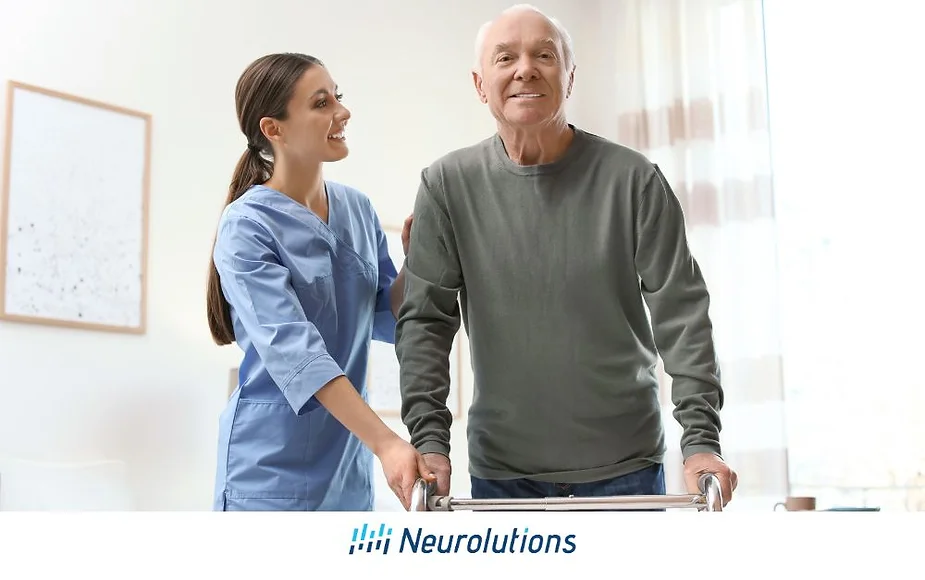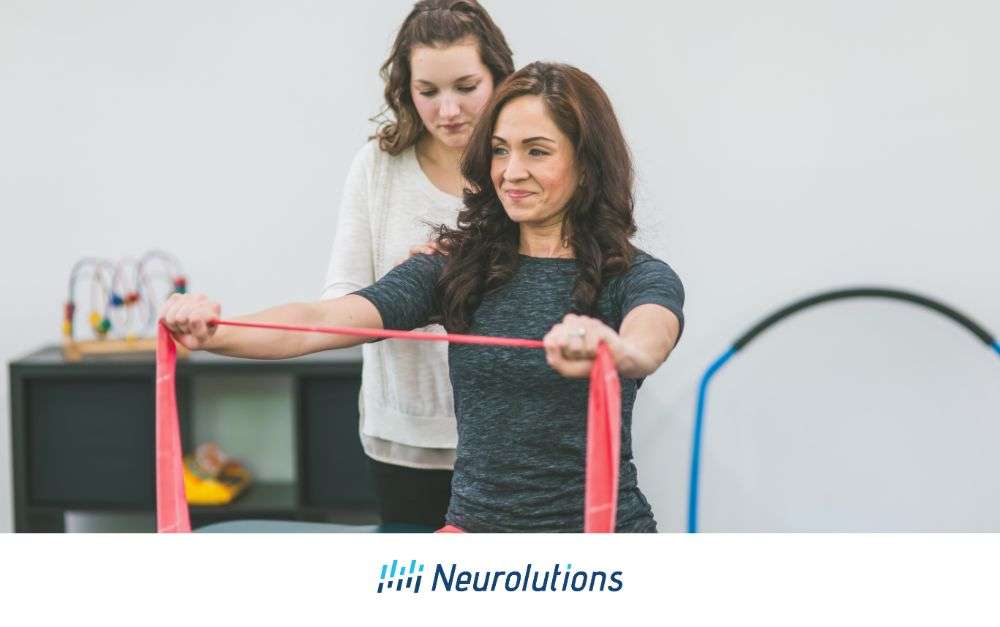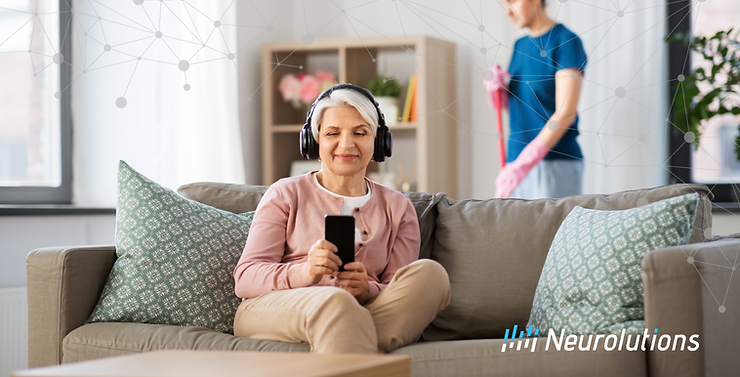When a loved one or friend has a stroke, it can be imperative for their recovery to provide support in the form of assistance from tasks such as getting dressed, helping assemble meals, and assisting in transportation to and from doctors and therapy appointments.
Offering assistance and providing hands-on care is appropriate- absolutely necessary at times. At other times, well-intentioned help can inadvertently hinder the stroke survivor’s progress toward recovery and regain their prior level of function. This is when “helping, is not really helping.”
Understanding the Different Phases of Stroke Recovery and What Assistance Levels are Commonly Needed
When a stroke occurs, the survivor moves through different stages of recovery.
Acute Phase of Stroke Recovery
The acute phase is considered the first stage of stroke recovery, immediately following the medical emergency stroke. At this time, the individual is usually admitted to the hospital for treatment which may include the removal of the clot and medical stabilization of all other symptoms. Many times, a hospital case manager and the team will be assigned to the individual to help coordinate care during this phase and for the discharge back home or to a rehabilitation program. This phase is usually characterized by severe impairment and an onset of symptoms such as one sided weakness, vision changes, mobility impairments, language impairment, or cognitive changes. During this phase, many individuals require a great deal of assistance in all activities and management of appointments and home-related activities.
The Sub-Acute Phase of Stroke Recovery
Following the initial onset of the stroke, the next phase of recovery is known as the subacute phase. This phase occurs during the first 6 months of the stroke recovery, and it often demonstrates rapid changes in impairment levels. This time is usually also characterized by participating in home inpatient, outpatient, or home health therapy services. These concentrate on increasing independence of daily activities as well as increasing strength and mobility.
During the subacute phase of stroke recovery, the level of assistance needed can vary depending on the individual’s specific impairments, functional abilities, and overall recovery process.
The Chronic Phase of Stroke Recovery
After 6 or more months following a stroke, a survivor experiences the chronic phase of stroke recovery. At this point, many survivors have entered a routine with their families for a caregiving arrangement while recovery slows down.
In the chronic phase, excessive help can create dependency and patterns of behavior. At times, too much help can limit the stroke survivor’s ability to practice and therefore regain important skills that were affected by the stroke. Allowing stroke survivors to practice compensatory and remedial skills is crucial for their self-esteem and confidence. When others complete tasks for them without giving them an opportunity to try, it can hinder their sense of independence and hinder their progress.
It is important to find a good balance of helping the survivor achieve their goals while providing a graded level of support that is “just right.”
Tips for Finding a Balance in Providing Assistance: A Guide for Caregivers
When trying to find a balance between finding the appropriate level of assistance, the following can be good tips:
- Allow Time for Practice and Independence
Allow extra time to let your loved one practice new ways of doing things for themselves. For example, if you are in a hurry to attend an early appointment, provide some assistance. Otherwise, allow them to practice independence if there is no hurry. - Encourage the Highest Possible Independence in Daily Routines and Activities
Encourage your loved one to participate in daily activities to the best of their abilities. Allow them to engage in tasks that they can manage independently, but be ready to provide assistance if needed. Gradually increase the complexity and challenge of activities as their skills improve. - Foster Problem-Solving Skills
Instead of immediately providing solutions or doing things for your loved one, encourage them to think critically and problem-solve independently. Help them identify potential challenges and brainstorm strategies to overcome them. Offer guidance and support, but allow them to take the lead in finding solutions. - Promote Safety During Tasks
Allow the individual to complete all tasks for themselves that are safe to do so. Help your loved one understand their limitations and potential safety risks. Educate them about strategies to prevent falls, such as taking their time while moving, using handrails, and maintaining a clutter-free environment. Encourage them to use appropriate safety measures, such as wearing non-slip footwear and using assistive devices when necessary. - Gradually Withdrawal Assistance
As your loved one’s abilities improve, gradually withdraw the level of assistance you provide. Give them opportunities to independently perform tasks and activities, even if it takes more time or effort. Offer guidance and support from a distance, ready to step in if safety is compromised. - Setting Manageable and Realistic Goals
Consider setting daily or weekly goals for tasks that the survivor before moving to monthly goals to make it seem more manageable. Understand that progress may be gradual, and setbacks can occur. Avoid placing unnecessary pressure on them to achieve specific milestones within a rigid timeline. - Provide Structure and a Routine
Structure and routine can be highly beneficial for stroke survivors in promoting their independence. Structure and routine creates predictability and familiarity, improves time management, offers memory support, fosters independence and self-initiation, and provides a natural order for sequencing and order. It also reduces decision fatigue which can be very common in stroke survivors. Routine also helps with skill retention with regular practice of therapeutic exercises, cognitive tasks, or functional activities to enhance independence and reduce caregiver burden.Not only is it beneficial for the stroke survivor, but the caregivers also benefit as it allows them to plan their own activities, allocate time for necessary tasks, and coordinate with the stroke survivor’s needs and appointments.
- Effective Communication of Expectations and Boundaries
Clearly communicate expectations and boundaries. Maintain open and effective communication with your loved one. Listen to their goals, concerns, and preferences. Offer emotional support and encouragement throughout their recovery journey. - Celebrate Achievements and Continued Home-Based Recovery
It is important to celebrate both small and big achievements and milestones along the way. During recovery from a stroke, becoming independent with tasks such as applying deodorant or feeding oneself can be big accomplishments. Additionally, returning to tasks like driving on a day-to-day basis allows for a reason to celebrate independence and self-fulfillment. Acknowledge their effort and progress, regardless of how small it may seem. - Collaboration with Therapy Team for Increased Independence
Talk to your therapy team for help in increasing independence at home in addition to recommendations and a progressive home exercise program. Encourage your loved one to participate actively in their therapy sessions, whether it is physical, occupational, or speech therapy. Attend therapy sessions with them if possible to better understand their progress and how to learn how to support their exercises and techniques at home. - Exploring In-Home Technologies and Programs
It is important to continue with home exercises even when the survivor is no longer in a therapy program. It is important to integrate available in-home technologies or programs for chronic survivors who are still working on impairments. For example, participation in constraint-induced movement therapy at home has been shown to increase functional use of the affected arm following a stroke as well as continued at-home use of orthotics to provide stability with functional mobility. The Neurolutions IpsiHand Upper Extremity Rehabilitation system is a great option for chronic stroke survivors who have otherwise graduated from all other therapies or “hit a wall in recovery.” - Expert Recommendations for Safety and Independence
It is a good idea to always have trained health professionals in the recovery process to guide assistance and support the caregiver. Physical and occupational therapists have experience in seeing what modifications and compensations have worked for stroke survivors in the past, and they can make recommendations to increase safety and independence at home.Consult with healthcare professionals, such as therapists and rehabilitation specialists, who can provide expert advice on promoting independence and avoiding learned dependency. They can help design personalized strategies and provide guidance throughout the recovery process.
- Small Modifications for Increased Independence
Small items of adaptive equipment or durable medical equipment, such as a toilet seat raiser or elastic shoe laces, can allow a stroke survivor from being dependent to being independent with easy small changes so they can eventually get on and off the toilet or put their own shoes on. Modifications, such as sitting to put on shoes versus standing, can be very important to increase safety as well as acting as a good stepping stone to being more independent, slowly but surely.
By implementing these strategies, you can help your loved one regain independence, promote self-efficacy, and support their overall recovery and well-being.
Striking the Balance for Effective Stroke Recovery
In conclusion, it can be very difficult to find a good balance between allowing the stroke survivor to be independent, safety, and failure. Failure in an activity is not always a bad thing when learning to do things differently following a stroke. New motor learning takes repetition and trial/error to help make new patterns in the brain. When caregivers, friends, and family help too much, this does not allow for new learning.
Over-helping or providing excessive assistance can indeed hinder a stroke survivor’s recovery by fostering learned dependency. It is important to strike a balance and promote independence during the rehabilitation process.




